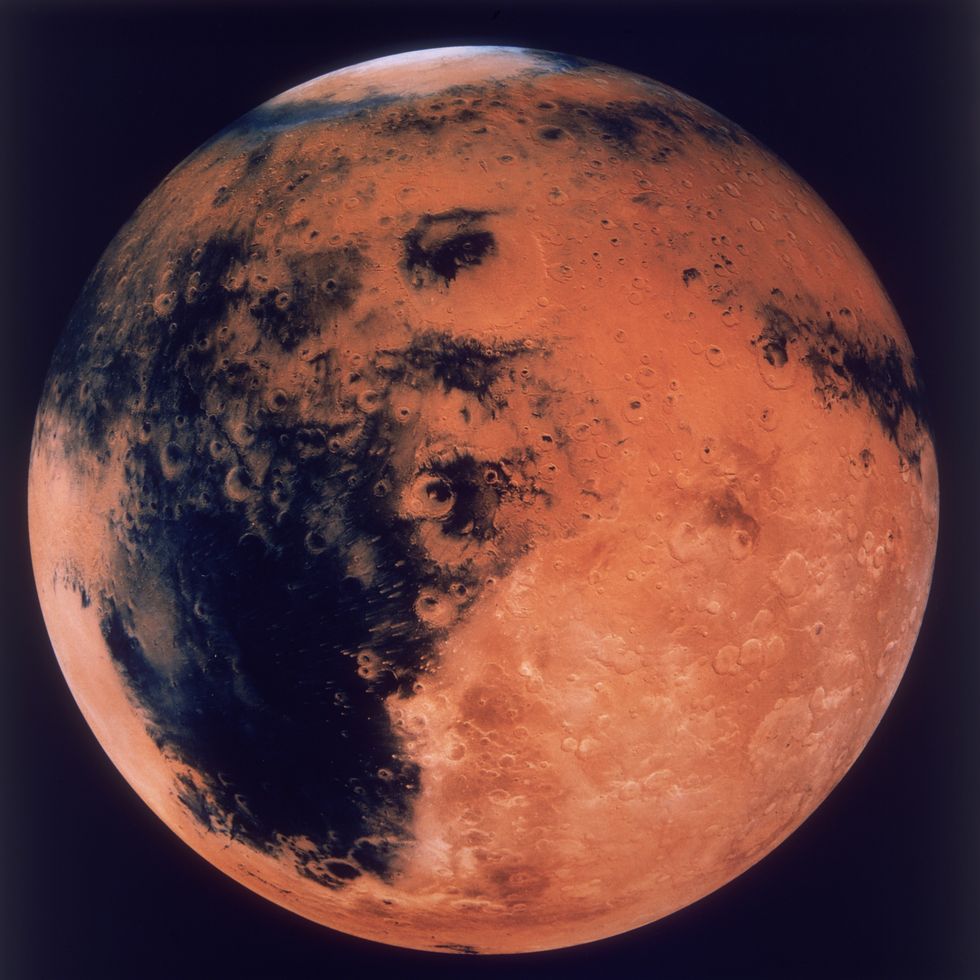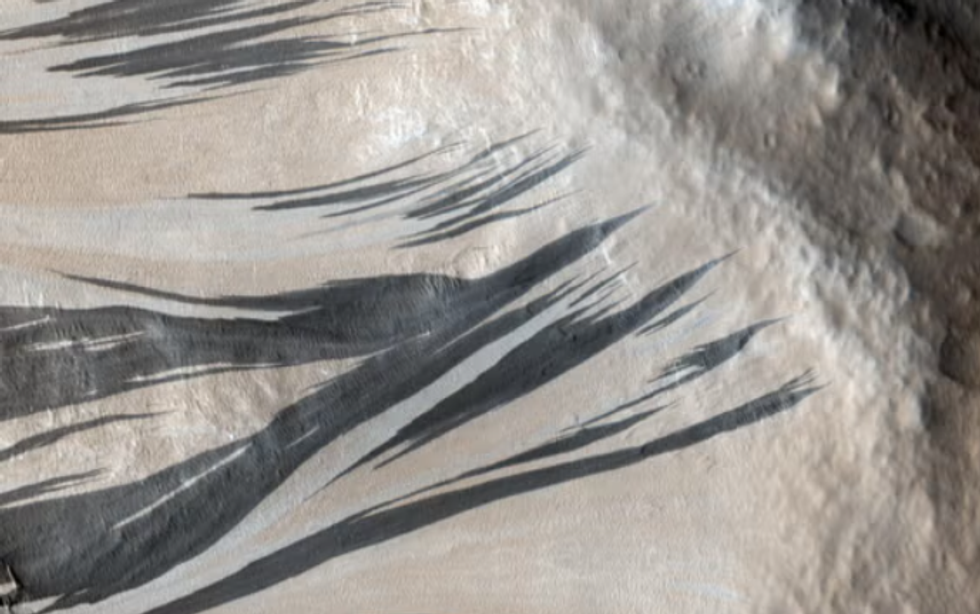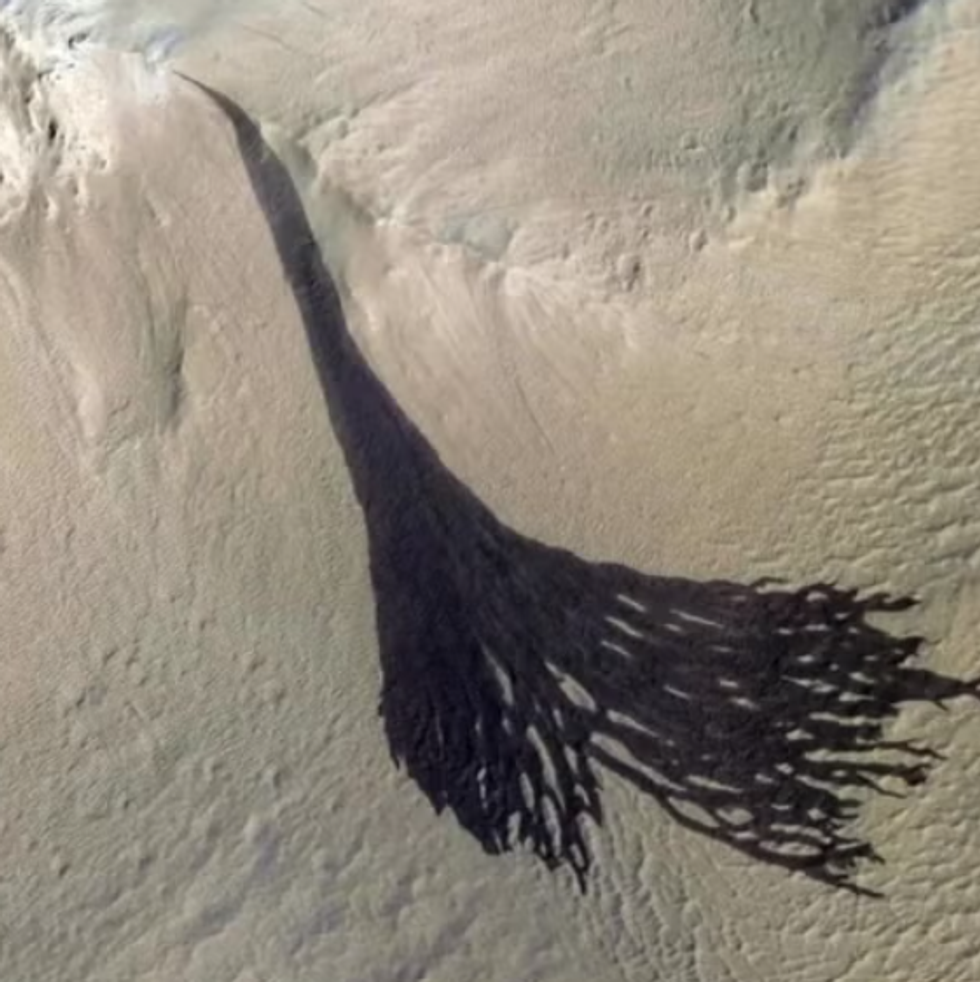Space breakthrough as mysterious dark streaks on Mars discovered 50 years ago are not what scientists initially believed

The streaks appear most frequently near recent impact craters, where shockwaves may dislodge surface dust
Don't Miss
Most Read
Latest
Dark streaks on Mars that have puzzled scientists since their discovery in the 1970s are not evidence of water as many researchers believed, but are instead caused by wind and dust activity, according to new research.
The mysterious features, which stretch for hundreds of metres down Martian slopes, have been a focal point for those searching for signs of liquid water on the Red Planet's surface.
Adomas Valantinas, a postdoctoral researcher at Brown University who co-authored the study published in Nature Communications, said: "Our study reviewed these features but found no evidence of water. Our model favours dry formation processes."
Researchers from Brown University and the University of Bern employed machine learning algorithms to create the first comprehensive global map of these Martian features.

Dark streaks on Mars that have puzzled scientists since their discovery in the 1970s are not evidence of water as many researchers believed, but are instead caused by wind and dust activity, according to new research
|Getty
The team analysed more than 86,000 high-resolution images from Nasa's Mars Reconnaissance Orbiter, cataloguing approximately 500,000 streaks across the planet's surface.
They then cross-referenced this extensive map with various environmental databases.
The team examined correlations with temperature, wind speed, hydration levels and rock slide activity across hundreds of thousands of cases.
The analysis revealed that the streaks, including those known as recurring slope lineae or RSLs, showed no association with factors typically linked to liquid or frost formation, such as specific slope orientations, high surface temperature fluctuations or elevated humidity levels.
LATEST DEVELOPMENTS:

The streaks appear most frequently near recent impact craters, where shockwaves may dislodge surface dust
|Getty
The research indicates that older slope streaks, which cascade down cliff faces and crater walls, are most likely formed when dust suddenly slides off slopes following seismic activity, winds or shockwaves from meteoroid impacts.
Nasa stated: "There were statistically significant correlations between new impact sites and the appearance of nearby slope streaks in certain regions, supporting this view."
The streaks appear most frequently near recent impact craters, where shockwaves may dislodge surface dust.

Shorter-lived streaks typically occur in areas with frequent dust devils or rockfalls
|Getty
Shorter-lived streaks typically occur in areas with frequent dust devils or rockfalls.
Valantinas said: "That's the advantage of this big data approach.
"It helps us to rule out some hypotheses from orbit before we send spacecraft to explore."










